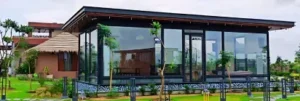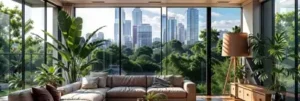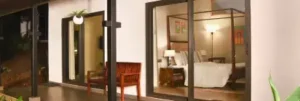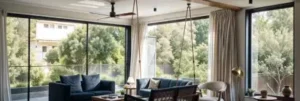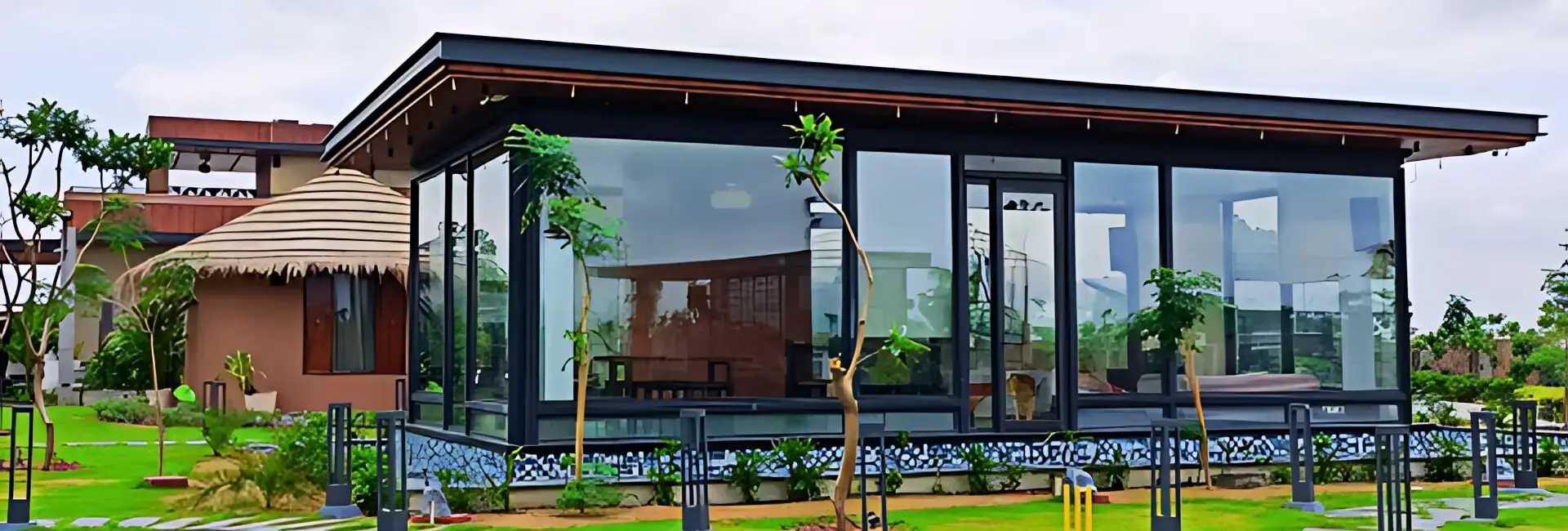
5 Popular Window Types Builders Prefer in 2025
If you’re planning a new build or a renovation in 2025, choosing the right windows is one of those decisions that can make or break your project. Windows aren’t just about letting light in—they set the vibe, boost energy efficiency, and can even add serious curb appeal. Builders today are leaning hard into aluminium for windows because of its durability, sleek look, and low maintenance. So, let’s dive into the five window types that are stealing the show this year, based on what builders are loving for their projects.
1. Casement Windows: The Classic Crowd-Pleaser
Casement windows are like the reliable friend who’s always there for you. Hinged on one side, they swing outward like a door, offering fantastic ventilation and unobstructed views. Builders love them for their versatility—they fit just about any architectural style, from modern lofts to cozy cottages. The aluminium glass window frames in casement designs are especially popular because they’re slim yet sturdy, letting in more light without compromising strength. Plus, they’re a breeze to clean, especially with easy-access hinges that let you reach both sides from indoors. In 2025, builders are pairing these with double or triple glazing to amp up energy efficiency, keeping homes cozy and cutting down on those pesky utility bills.
2. Sliding Windows: Sleek and Space-Saving
If you’re working with tight spaces or want a modern, minimalist vibe, window sliding aluminium designs are your go-to. These windows glide horizontally along a track, making them perfect for areas where you don’t want a window swinging out into a walkway or balcony. Builders are all about sliding windows for their ease of use and ability to handle large glass panes, which flood rooms with natural light. They’re a favorite for urban homes or apartments where space is at a premium. The aluminium frames add a sleek, contemporary edge, and when paired with low-E glass, they’re champs at keeping heat in during winter and out during summer. Bonus: they’re super low-maintenance, which homeowners love.
3. Tilt-and-Turn Windows: The Best of Both Worlds
Tilt-and-turn windows are like the Swiss Army knife of windows, and builders can’t get enough of them in 2025. These clever aluminium glass windows can tilt inward from the top for ventilation or swing open like a door for maximum airflow and easy cleaning. They’re a top pick for multi-story buildings or homes where exterior access is tricky. The dual functionality makes them a hit for safety-conscious homeowners, as the tilt mode lets you get fresh air without fully opening the window—perfect for ground-floor rooms. Aluminium for windows shines here, offering slim profiles that maximize glass space while staying tough against the elements. Builders also love that these windows can be customised with various finishes to match any home’s aesthetic.
4. Bi-Fold Windows: Opening Up Possibilities
Want to blur the line between indoors and out? Bi-fold windows are having a major moment in 2025. These windows feature multiple panels that fold and stack to one side, creating wide-open spaces perfect for entertaining or connecting with your backyard. Builders are using window sliding aluminium systems for bi-folds because they’re lightweight yet strong enough to support large glass panels. They’re a go-to for kitchens, patios, or even commercial spaces like cafes, where you want that open-air vibe. The downside? They can be pricier due to their complex mechanisms, but the wow factor and seamless indoor-outdoor flow make them worth it for many projects.
5. Fixed Windows: Picture-Perfect Views
Sometimes, you just want a window that’s all about the view, and that’s where fixed windows come in. These non-opening windows are essentially glass panels framed in aluminium, designed to maximise light and showcase stunning scenery. Builders are choosing this type of window for modern homes or spaces where ventilation isn’t a priority, like living rooms or stairwells. The slim aluminium frames allow for larger glass areas, making them ideal for creating a dramatic, panoramic effect. They’re also energy-efficient, as there are no moving parts to let air leak through. In 2025, fixed windows are often paired with other window types, like casements or sliders, to balance aesthetics and functionality.
Why Aluminium is the Star of the Show
Across all these window types, aluminium for windows is the material of choice for builders in 2025. Why? It’s lightweight, rust-resistant, and can be powder-coated in virtually any color to match a home’s vibe. Plus, it’s recyclable, making it a win for eco-conscious projects. Aluminium frames are also incredibly durable, lasting up to 40 years with minimal upkeep, which is a huge selling point for homeowners. The slim profiles allow for bigger glass areas, letting in more light without sacrificing structural integrity. Sure, aluminium conducts heat, but thermally broken frames have largely solved that issue, boosting insulation and keeping homes comfortable year-round.
Wrapping Up
Choosing the right type of windows is about balancing style, function, and efficiency, and in 2025, builders are gravitating toward aluminium glass windows for their versatility and modern appeal. Whether it’s the classic charm of casement windows, the space-saving ease of sliding windows, the multi-functional tilt-and-turn, the open-air magic of bi-folds, or the sleek simplicity of fixed windows, there’s an option for every project. Aluminium’s durability, low maintenance, and design flexibility make it a no-brainer for builders looking to create homes that are both beautiful and practical.
At Eternia, we offer high-performance aluminium window and door systems engineered specifically for Indian conditions. Backed by cutting-edge Duranium™ technology, our products combine durability, style, and innovation to elevate every project. Whether you’re designing a home or planning a large-scale development, Eternia’s solutions bring unmatched quality, aesthetics, and performance to the table. Partner with us to bring your architectural vision to life—beautifully and sustainably.
Frequently Asked Questions
Aluminium windows are durable, low-maintenance, and offer slim frames that maximise glass area for more light. They’re also recyclable and weather-resistant, making them a practical and eco-friendly choice.
Absolutely! Window sliding aluminium designs are perfect for small spaces since they don’t swing out, saving room on balconies, patios, or tight interiors.
Tilt-and-turn windows can tilt inward for ventilation without fully opening, reducing the risk of intrusion, especially in ground-floor rooms or high-value properties.
Bi-fold windows can be more expensive due to their complex folding mechanisms and may require more maintenance to keep the tracks clean and functional.
Yes, fixed windows are highly energy-efficient since they have no moving parts to allow air leaks, especially when paired with double or triple glazing and thermally broken aluminium frames.


 +91 97699 40000
+91 97699 40000

